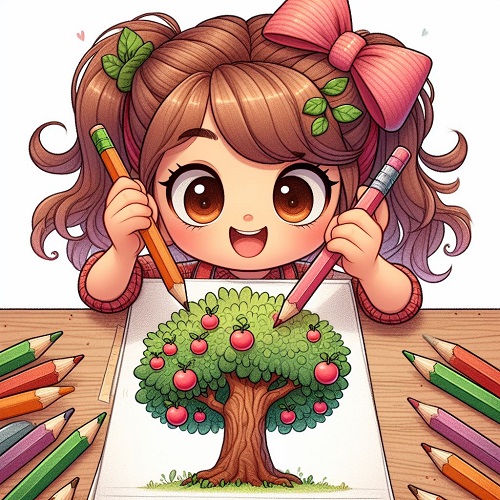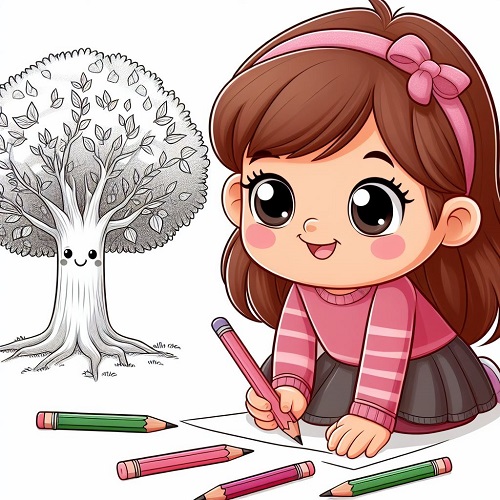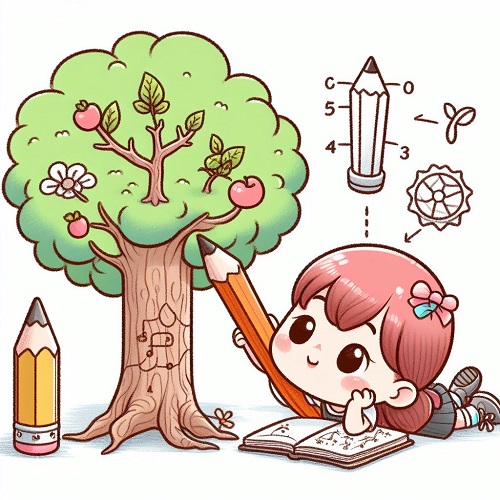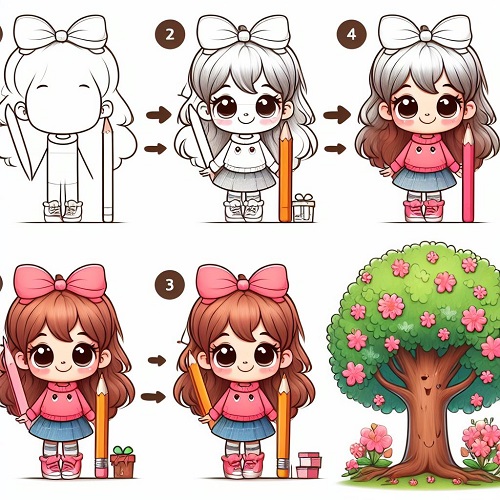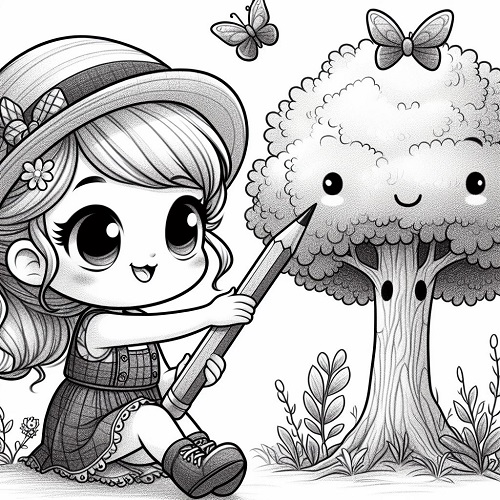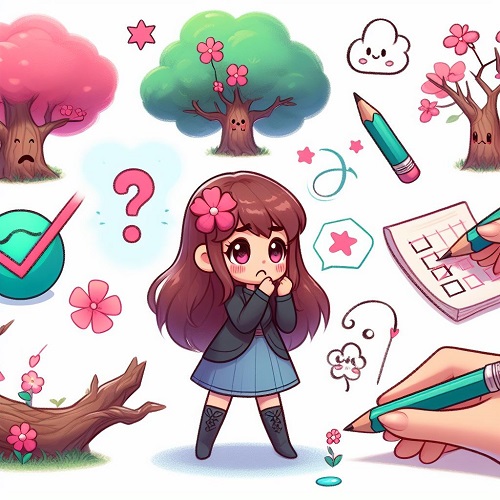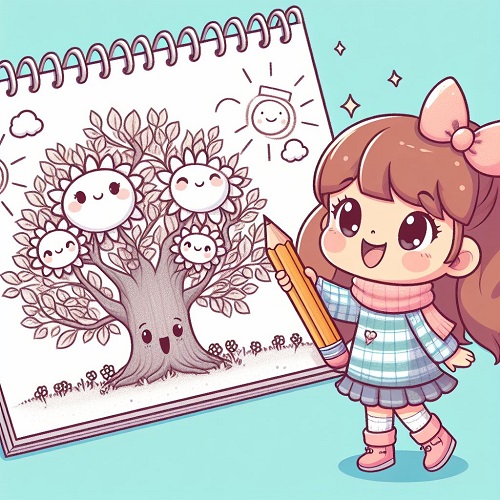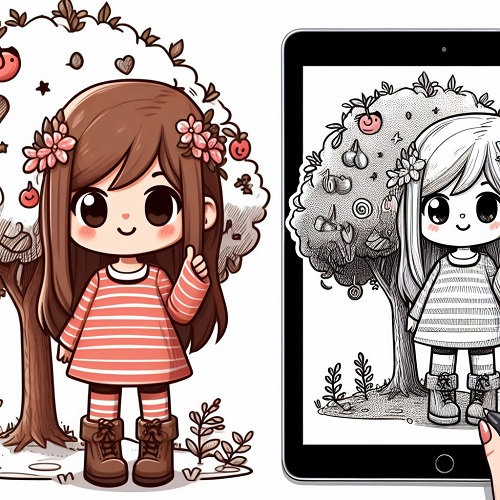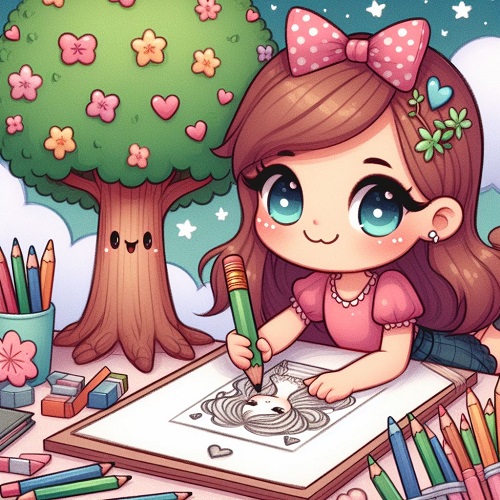Mastering the Art of Tree Pencil Drawing: A Step-by-Step Guide for Aspiring Artists
In the enchanting world of visual arts, pencil drawing stands as an enduring and versatile medium, capturing the essence of subjects with finesse. Among the myriad subjects, trees emerge as captivating entities, their complexity offering both challenge and inspiration. This comprehensive guide is your key to unlocking the secrets of tree pencil drawing, providing aspiring artists with a step-by-step journey through techniques, tips, and a deep understanding of the art.
I. Getting Started with Tree Pencil Drawing
1.1 Necessary Supplies
To embark on your artistic journey, assembling the right materials is crucial. Begin with quality pencils, considering various grades for different effects. Invest in a range of erasers and sharpeners, and explore different paper textures and sizes to enhance your drawing experience. This FAQ addresses common questions about selecting the optimal supplies.
FAQ:
-
What pencil grades are best for tree drawing?
- Explore the versatility of pencil grades, from 2H for light outlines to 6B for dark shading.
-
Do I need special paper for tree pencil drawing?
- Learn about the importance of textured paper and how it affects the final result of your drawings.
1.2 Choosing the Right Tree Reference
Choosing the right tree reference is an art in itself. Delve into the types of trees that are particularly well-suited for pencil drawing. Utilize online resources for a plethora of references and gain insights into selecting a visually compelling composition.
FAQ:
-
Where can I find high-quality tree references online?
- Explore online platforms and databases offering a diverse range of tree images for your drawing inspiration.
-
How can I create a balanced composition in my tree drawing?
- Learn about the rule of thirds and other compositional techniques to create visually appealing tree drawings.
II. Understanding the Anatomy of Trees
2.1 Breaking Down Tree Components
To draw a tree convincingly, understanding its anatomy is crucial. Break down the components—trunk, branches, and leaves. This section delves into the intricate details, providing insights into the subtle nuances that make a tree drawing authentic.
FAQ:
-
What are some key characteristics of different tree species?
- Explore the unique features of common tree species, from the elegant Oak to the majestic Pine.
-
How can I capture the texture of bark in my drawings?
- Learn advanced shading techniques to depict the varying textures of tree bark realistically.
2.2 Sketching Techniques for Tree Elements
Mastering sketching techniques elevates your tree drawings. Dive into cross-hatching to depict texture and shading to create depth. Discover the art of highlighting and shadowing for a nuanced and realistic representation.
FAQ:
-
How do I achieve realistic shading in my tree drawings?
- Explore step-by-step shading techniques, emphasizing the play of light and shadow on different parts of the tree.
-
Can I use cross-hatching for all types of trees?
- Understand the adaptability of cross-hatching and when to employ other techniques for specific tree varieties.
III. Step-by-Step Tree Pencil Drawing Tutorial
3.1 Setting Up Your Workspace
A conducive workspace sets the stage for artistic brilliance. Learn how to organize your tools, set the lighting right, and create an environment that fuels creativity.
FAQ:
-
What’s the ideal lighting for pencil drawing?
- Understand the significance of natural light and the role of artificial lighting in enhancing your workspace.
3.2 Initial Sketching of the Tree Outline
Embark on the artistic journey with the initial sketch. This step lays the foundation for your tree drawing, focusing on capturing the overall form and structure of the tree.
FAQ:
-
Should I start with the trunk or the branches when sketching?
- Gain insights into the best practices for starting your tree drawing and maintaining proportional balance.
3.3 Adding Details and Refining with Shading
Move beyond the basic sketch by adding intricate details to the trunk, branches, and leaves. Learn the art of refining your drawing with shading and texture, bringing your tree to life.
FAQ:
-
How can I make my leaves look more realistic?
- Explore techniques for rendering leaves with a natural, organic appearance, considering factors like size and placement.
3.4 Final Touches and Enhancements
The final touches can make or break a drawing. Discover the subtle enhancements that elevate your tree pencil drawing from good to extraordinary.
FAQ:
-
What tools can I use for final detailing?
- Explore various tools, including kneaded erasers and fine pencils, to add those finishing touches to your masterpiece.
IV. Tips and Tricks for Realistic Tree Pencil Drawings
4.1 Incorporating Perspective and Depth
Unlock the secrets of incorporating perspective and depth into your tree drawings. This section explores techniques to create a three-dimensional effect, making your trees leap off the paper.
FAQ:
-
How can I make my trees appear distant in the background?
- Learn about atmospheric perspective and other techniques to create a sense of depth in your drawings.
4.2 Playing with Light and Shadows
The interplay of light and shadows adds a dynamic quality to your tree drawings. Delve into the art of playing with light, understanding the source and direction to enhance the visual impact.
FAQ:
-
What role does the light source play in tree drawing?
- Understand how the position of the light source affects the shadows and highlights in your tree drawing.
V. Troubleshooting Common Mistakes
5.1 Overworking the Drawing
Artistic enthusiasm sometimes leads to overworking, potentially diminishing the quality of your drawing. This section provides strategies to avoid this common pitfall, ensuring your tree drawing remains true to your vision.
FAQ:
-
How can I tell if I’ve overworked my drawing?
- Learn to identify signs of overworking, such as muddiness or loss of detail, and strategies to rectify the situation.
5.2 Uneven Shading and Proportion Issues
Perfecting shading and maintaining proportion are common challenges. Explore troubleshooting techniques to rectify uneven shading and proportion issues, refining your skills in the process.
FAQ:
-
Why is proportion important in tree drawing?
- Understand the significance of proportion and how it contributes to the overall balance and realism of your tree drawings.
VI. Showcasing Inspirational Tree Pencil Drawings
6.1 Featuring Renowned Artists and Their Tree Drawings
Immerse yourself in the works of renowned artists who have mastered the art of tree pencil drawing. Analyze different styles and techniques, gaining inspiration from the masters of the craft.
FAQ:
-
How can studying other artists’ work improve my skills?
- Learn how studying diverse styles enhances your understanding and ability to incorporate various techniques into your own drawings.
6.2 Analyzing Different Styles and Techniques
Explore the vast world of styles and techniques employed by artists in their tree drawings. From hyper-realism to impressionism, this section offers a glimpse into the versatility of tree pencil art.
FAQ:
-
Can I develop my unique style in tree pencil drawing?
- Discover the importance of experimentation and finding your artistic voice, even in a traditional medium like pencil drawing.
6.3 Drawing Inspiration from Nature and Real-Life Landscapes
Nature serves as an infinite source of inspiration. Learn how to draw inspiration from the beauty of the outdoors, infusing your tree drawings with authenticity and emotion.
FAQ:
-
How can I translate real-life landscapes into my drawings?
- Understand techniques for capturing the essence of natural landscapes and incorporating them into your tree drawings.
VII. Digital vs. Traditional Tree Drawing
7.1 Pros and Cons of Each Approach
Delve into the advantages and disadvantages of traditional and digital approaches to tree drawing. Understand the unique characteristics of each medium, allowing you to choose the one that aligns with your artistic vision.
FAQ:
-
Can I achieve the same level of detail in digital tree drawing as in traditional?
- Explore the capabilities of digital tools in achieving intricate details and the unique advantages of traditional pencil drawing.
7.2 Recommended Tools and Software for Digital Tree Drawing
For those venturing into the digital realm, this section guides you through recommended tools and software, providing a starting point for your exploration.
FAQ:
-
What’s the best software for a beginner in digital tree drawing?
- Explore user-friendly digital drawing software suitable for beginners, with tips for a smooth transition from traditional to digital.
7.3 How to Transition from Traditional to Digital
If you’re considering making the leap from traditional to digital, this section offers practical advice on the transition process, allowing you to seamlessly integrate digital tools into your artistic repertoire.
FAQ:
-
Will my traditional drawing skills translate to digital?
- Understand how foundational skills from traditional drawing can enhance your proficiency in digital tree drawing.
VIII. Building a Portfolio and Sharing Your Art
8.1 Importance of Creating a Portfolio
A well-curated portfolio is your artistic showcase. Explore the importance of building a portfolio, both online and offline, as a testament to your growth and versatility as a tree pencil artist.
FAQ:
-
What should I include in my portfolio?
- Learn how to assemble a diverse portfolio that highlights your range and showcases the progression of your tree pencil drawing skills.
8.2 Tips for Presenting Your Drawings Online
In the digital age, online presentation is paramount. Discover effective strategies for presenting your tree drawings online, maximizing visibility, and connecting with a wider audience.
FAQ:
-
How can social media enhance my online presence as an artist?
- Explore the role of social media platforms in fostering connections, gaining exposure, and receiving valuable feedback.
8.3 Engaging with the Art Community
Engaging with the art community is a reciprocal journey. Learn the importance of seeking feedback, participating in discussions, and fostering connections within the art community.
FAQ:
-
How can constructive criticism benefit my artistic growth?
- Understand the value of constructive criticism and how it contributes to your continuous improvement as an artist.
IX. Conclusion
In conclusion, this comprehensive guide has equipped you with the tools, techniques, and insights needed to master the art of tree pencil drawing. Whether you are a beginner seeking foundational knowledge or an experienced artist looking to refine your skills, embrace the joy of creating breathtaking tree drawings that resonate with the beauty of nature. Happy drawing!
- Mastering the Art: A Comprehensive Guide to Pokemon Pencil Drawing
- Mastering the Art of Pencil Drawing on Canvas: Your Comprehensive Guide
- Unveiling Artistry: A Comprehensive Guide to Horse Pencil Drawings
- Mastering the Art of Pencil Drawing Cartoon Characters: A Comprehensive Guide
- Unleash Your Creativity: A Comprehensive Step-by-Step Guide to Colored Pencil Drawing
- Unleashing the Depths of Creativity: A Comprehensive Guide to Octopus Pencil Drawing
- Unlocking the Artistry: A Deep Dive into Black Pencil Drawing
- Mastering the Art of Tree Pencil Drawing: A Step-by-Step Guide for Aspiring Artists
- Dive into Creativity: The Magic of Underwater Pencil Drawing
- Unleashing Creativity: Mastering the Art of 2B Pencil Drawing

